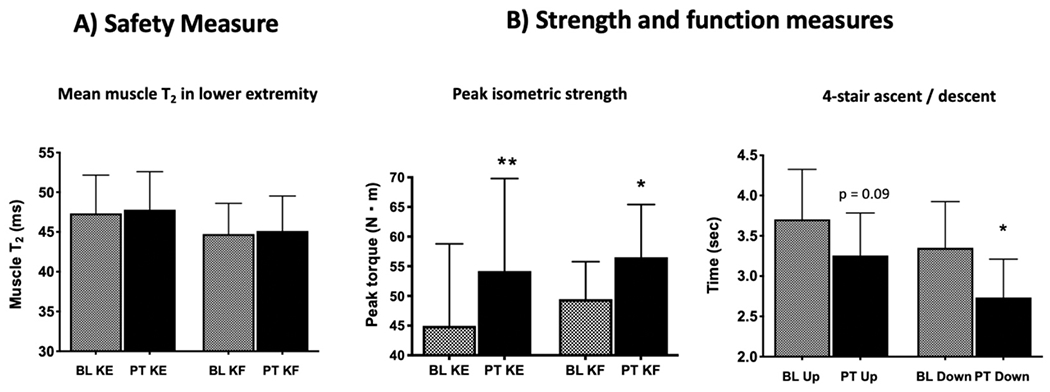Figure 2.

Baseline (BL) measures compared to post-training (PT) of the knee extensors (KE) and flexors (KF) after 12 weeks of moderate intensity isometric exercise: A) No increase in the primary safety measure of MRI T2 (a construct of muscle damage) was noted [non-significant increase in mean T2 from baseline to 12 weeks: KE = 2.3 (SD 3.6)% and KF = 0.4 (SD 4.6)%]; B) Significant improvements occurred for both outcome measures assessing strength (sum of KE or KF at both leg positions tested) and functional ability. Peak torque increased by 20.6% for KE and 14.3% for KF, and the time to ascend (13.5%) and descend (22.7%) four steps improved after 12 weeks of leg strengthening.
Differences noted between BL and PT (*p < 0.05, **p < 0.01).
